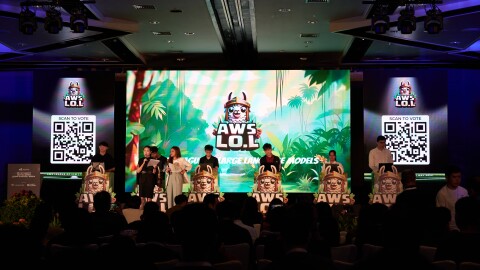Current computing is like a calculator that uses binary logic or a sequence of bits – values 0 and 1 – to represent two states to make sense of data[1]. For example, if we have four bits, we can represent data in numbers like 0000, 0001, and 0010. Quantum computing uses quantum bits (known as qubits) where values 0 and 1 can also exist as 1 and 0 at the same time. Think of a coin being tossed in the air. It is both ‘heads’ and ‘tails’ while it’s in the air, but it lands on your hand as only ‘heads’ or ‘tails’[2].
Quantum computing scientists are developing quantum algorithms that solve computational tasks much faster than algorithms based on binary logic. Take for example Grover’s algorithm; a quantum search quantum computer tool developed by computer scientist Lov Grover that can search databases faster than a classical computer[3]. What would take a traditional computer one million steps can be done in around 1000 steps using a quantum computer. We are able to build new systems using these quantum algorithms to solve challenges in artificial intelligence, materials science, medical research, and supply chain optimization to name a few.
Quantum computing is still in the research stage, and we have several technical hurdles to scaling quantum computers and dealing with quantum noise to overcome. Nevertheless, it is important to start to experiment now to understand this exciting new technology and its potential applications.
Overcoming quantum computing challenges
Amazon launched the AWS Center for Quantum Computing in 2019 with a goal of accelerating the development of quantum computing technologies and applications globally. Recently, AWS announced the launch of a new facility for quantum computing at the California Institute of Technology (Caltech) with the ambitious goal of building a fault-tolerant quantum computer. This new building is dedicated to AWS’s quantum computing efforts, and includes office space to house our quantum research teams, and laboratories comprising the scientific equipment and specialized tools for designing and running quantum devices.
In Singapore, the nation is addressing quantum computing challenges through the Quantum Engineering Programme (QEP), a national initiative launched by the National Research Foundation, Singapore. QEP is exploring the use of quantum technologies to innovate for the future, including quantum computing, quantum communications, and quantum devices.
Thinking global with local talent
Developing quantum algorithms and designing useful quantum applications requires new skills and radically different approaches to how we have worked in the past. The National University of Singapore, which hosts the QEP, is collaborating with Amazon Web Services (AWS) to boost the development of quantum communication and quantum computing to explore business applications to solve real-world problems. The collaboration is focused on researching solutions across sectors like transportation, manufacturing, and finance.
“With its strong research base, community of startups in the quantum field, and growing awareness among businesses of the potential impact of quantum technologies, Singapore has an opportunity to nurture a quantum community. We will build on Singapore’s pool of talent to work with companies big and small, from startups to multinationals, on new devices, applications, and services,” said Associate Professor Alexander Ling, Director of the QEP.
Making quantum computing more accessible
To help accelerate the race to develop solutions using quantum technologies, AWS developed Amazon Braket, which allows researchers and developers to access different types of quantum computers from their AWS accounts. Amazon Braket includes simulators so developers can test their work on standard computing environments before running applications on quantum computers. The service allows for easier and quicker experimentation. This is important, because many of today’s quantum workloads are in their infancy, and this flexibility enables customers to fine-tune their ideas, iterate, and scale future projects.
“Quantum computing is still a relatively new concept and making the technology accessible is the first step. Individuals and organizations need to experiment and explore the technology’s potential to address real-world needs,” explained Ling. “With many different quantum hardware options available, companies may want to test drive a few to find the one that best suits their business and goals.”
“AWS is committed to making quantum technology accessible to customers to develop industry-focused solutions,” said Carl Ward, Director, Solution Architecture for Worldwide Public Sector, Asia Pacific and Japan, AWS. “Building on years of Singapore’s quantum technology expertise, collaborating with the nation’s QEP brings us one step closer to solving some of our toughest problems and making our world a better place.”
While we are still in the early stages of our journey to democratize quantum computing, we are on track to making this powerful technology a reality in our daily lives. AWS working with QEP is an example of a public-private collaboration to accelerate innovation and pave the way to new transformative computing capabilities.
Read more about Amazon Braket, Amazon Quantum Solutions Lab, and AWS Center for Quantum Computing.
References
[1] Source: https://www.forbes.com/sites/bernardmarr/2017/07/04/what-is-quantum-computing-a-super-easy-explanation-for-anyone/?sh=36f0e1ed1d3b
[2] Source: https://www.youtube.com/watch?v=lypnkNm0B4A
[3] Grover’s algorithm is also known as the quantum search algorithm. It is a search quantum computer tool developed by Lov Grover, designed to allow databases to be quickly searched using a quantum computer. Source: https://www.infoq.com/articles/post-quantum-bisymmetric-hybrid-encryption/











